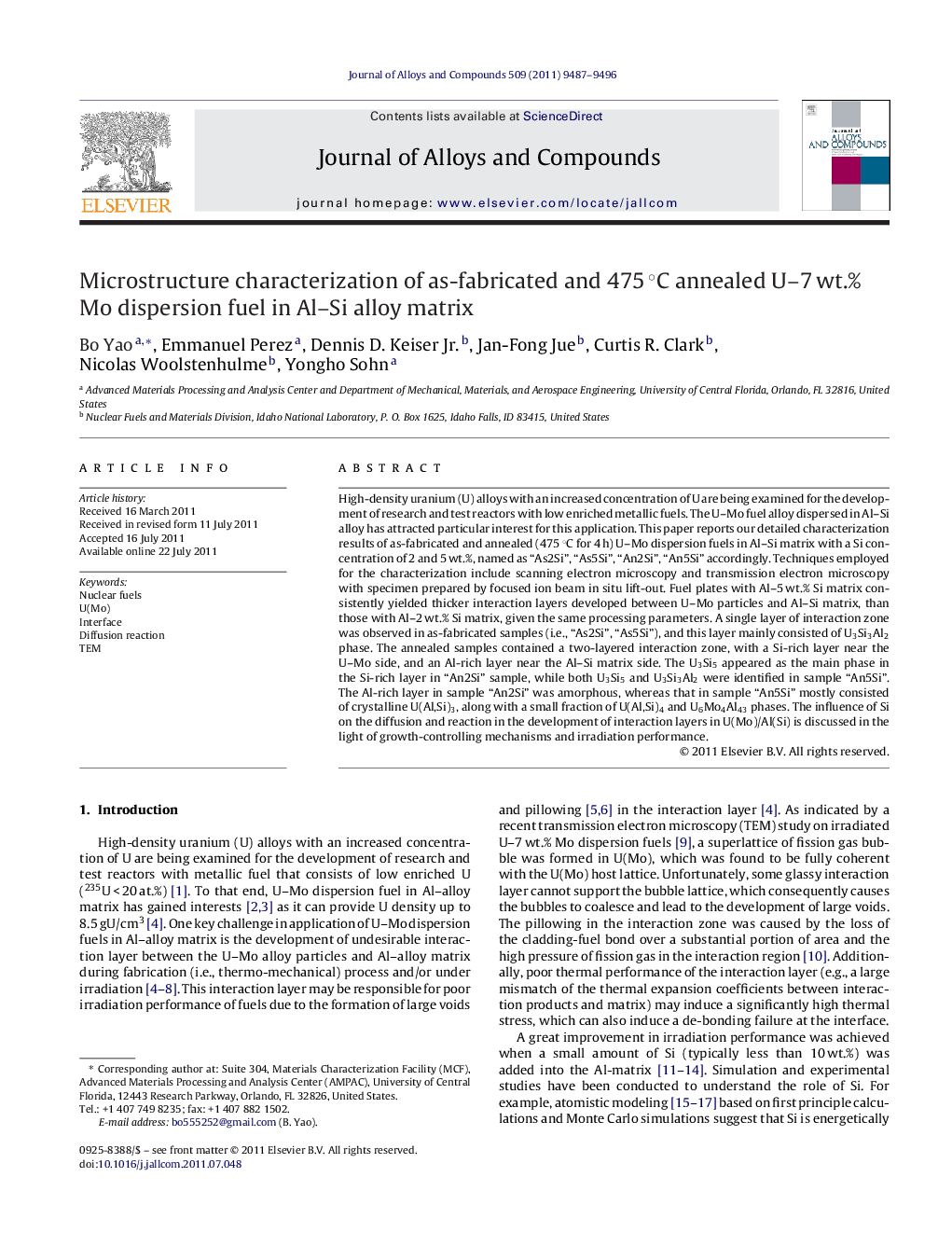| Article ID | Journal | Published Year | Pages | File Type |
|---|---|---|---|---|
| 1616801 | Journal of Alloys and Compounds | 2011 | 10 Pages |
High-density uranium (U) alloys with an increased concentration of U are being examined for the development of research and test reactors with low enriched metallic fuels. The U–Mo fuel alloy dispersed in Al–Si alloy has attracted particular interest for this application. This paper reports our detailed characterization results of as-fabricated and annealed (475 °C for 4 h) U–Mo dispersion fuels in Al–Si matrix with a Si concentration of 2 and 5 wt.%, named as “As2Si”, “As5Si”, “An2Si”, “An5Si” accordingly. Techniques employed for the characterization include scanning electron microscopy and transmission electron microscopy with specimen prepared by focused ion beam in situ lift-out. Fuel plates with Al–5 wt.% Si matrix consistently yielded thicker interaction layers developed between U–Mo particles and Al–Si matrix, than those with Al–2 wt.% Si matrix, given the same processing parameters. A single layer of interaction zone was observed in as-fabricated samples (i.e., “As2Si”, “As5Si”), and this layer mainly consisted of U3Si3Al2 phase. The annealed samples contained a two-layered interaction zone, with a Si-rich layer near the U–Mo side, and an Al-rich layer near the Al–Si matrix side. The U3Si5 appeared as the main phase in the Si-rich layer in “An2Si” sample, while both U3Si5 and U3Si3Al2 were identified in sample “An5Si”. The Al-rich layer in sample “An2Si” was amorphous, whereas that in sample “An5Si” mostly consisted of crystalline U(Al,Si)3, along with a small fraction of U(Al,Si)4 and U6Mo4Al43 phases. The influence of Si on the diffusion and reaction in the development of interaction layers in U(Mo)/Al(Si) is discussed in the light of growth-controlling mechanisms and irradiation performance.
► A detailed characterization of as-fabricated and 475 °C annealed U–7 wt.% Mo dispersion fuel in Al–Si matrix plates has been carried out. ► The initial phase formation in the interaction layer and its evolution upon further annealing were understood based on the influence of Si on the diffusion and reaction in the development of interaction layers.
